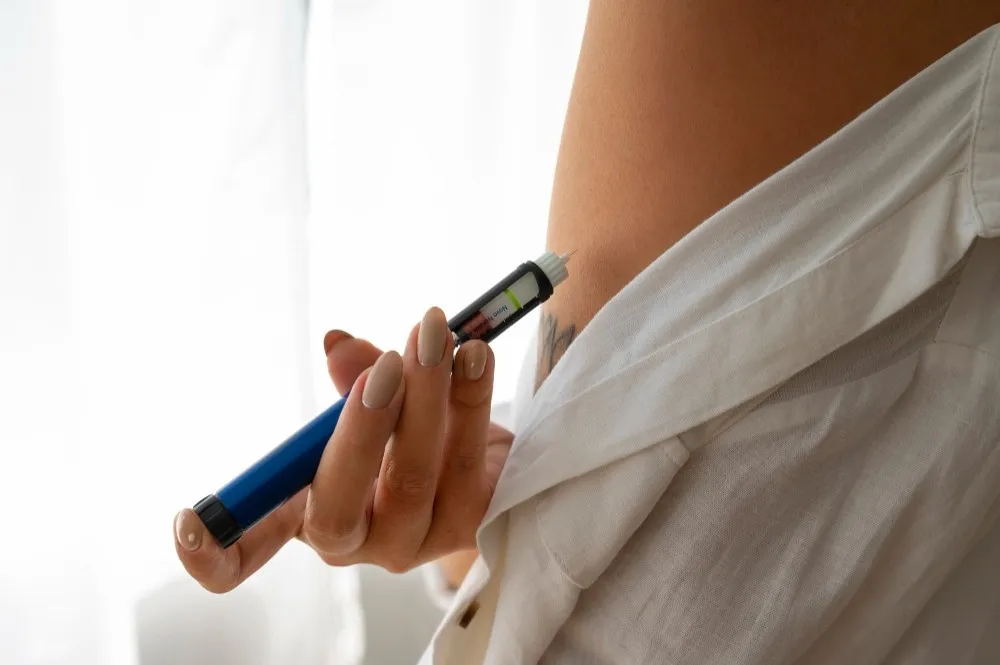To understand the pathophysiology of diabetes, we need to first know how blood glucose level is a function of complex interaction between the gastrointestinal tract, pancreas and liver. Carbohydrate metabolism and action of insulin are the two mechanisms which have an influence on it.
Post-meals, the carbohydrates in our food are broken down into glucose molecules. These glucose molecules are absorbed into the bloodstream which stimulates insulin secretion from the beta-cells of the pancreas. Insulin binds to the specific receptors on the body cells and allows the glucose entry into the cells which utilizes glucose for energy. Both these actions - insulin secretion from pancreas and cellular utilization of glucose - results in lowering of blood glucose levels. This in turn decreases insulin secretion.
Due to certain factors, insulin production and secretion may get alter which affects the blood glucose dynamics
- A decrease in insulin production inhibits entry of glucose into the cells, causing hyperglycemia.
- An increase in insulin secretion enhances entry of glucose into the cells and only a small amount remains in the bloodstream, causing hypoglycemia.
After meals, there is excess glucose in the blood which gets stored in the liver as glycogen. Glycogen acts as an energy pool for our future use. Through a process called glycogenolysis, this glycogen converts into glucose. Liver also converts proteins and fatty acids into glucose (a process known as gluconeogenesis). Both these processes also results in increasing blood glucose levels.
Various hormones play a role in regulating glycemia (blood glucose levels) like,
- Insulin lowers blood glucose levels
- Glucagon, catecholamines, thyroid hormones, and glucocorticoids increase blood glucose levels
Based on the causative factors, there are two types of diabetes:
Type I diabetes
Also known as juvenile onset or insulin-dependent diabetes, Type I diabetes occurs due to autoimmune destruction of pancreatic beta-cells which secretes insulin. There are various factors that can trigger this autoimmune destruction like viral infection, genetics or other diseases.
Usually the onset of Type I diabetes is sudden and occurs before the age of 30 years.
A major complication of Type I diabetes is diabetic ketoacidosis (DKA). In the absence of insulin, glucose molecules are unable to enter into cells. Then how will cells meet their energy needs? Cells break down fat into glycerol and fatty acids (a process called lipolysis). Glycerol changes into glucose and fatty acids give ketones. Glucose is utilized but ketones lie in the body fluids and are excreted in the urine along with excessive water. Stress or infection in a diabetic patient may lead to DKA which if left untreated, may lead to electrolyte imbalance and coma or death. Chronic hyperglycaemic individuals who do not control their intake of glucose or do not administer insulin regularly are at higher risk.
Type 2 Diabetes
Genetic factors, obesity, age and inactive lifestyle are the major risk factors for type 2 diabetes. There are three disorders which may lead to Type 2 diabetes:
- peripheral resistance to insulin, especially in muscle cells;
- increased production of glucose by the liver; and,
- altered pancreatic insulin secretion.
All the above lead to high blood glucose levels (hyperglycemia). Generally type 2 diabetes patients have a slow onset of the disease and go unnoticed for years. The high blood glucose levels also have negative effects on the other organs. The excess glucose is excreted in the urine with water loss. It may lead to dehydration, electrolyte imbalance and acidic pH.

Reviewed by







